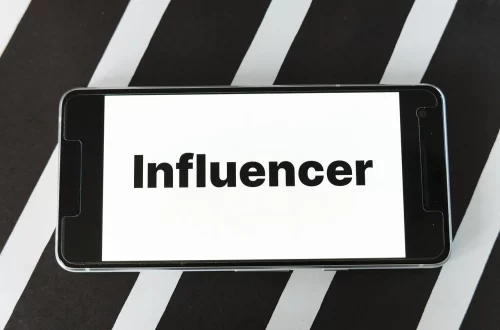
Exploring the Allure of Naked Hairy Muscle Men in Modern Culture
The appreciation of the human form has long been a subject of fascination across cultures and eras. In contemporary society, the portrayal of muscular men, often in their natural state, has taken on new dimensions, reflecting evolving attitudes toward masculinity, body image, and sexuality. The representation of “naked hairy muscle men” is not merely a superficial trend; it encapsulates a complex interplay of cultural values, aesthetic ideals, and the ongoing dialogue surrounding gender identity.
As discussions around body positivity and acceptance gain traction, the allure of these figures becomes even more pronounced. They symbolize a break from traditional, often unrealistic portrayals of masculinity, inviting a broader understanding of what it means to be masculine in today’s world. The celebration of body hair, muscle, and naturalism speaks to a growing desire for authenticity and self-expression, challenging long-held norms about appearance.
Moreover, the digital age has facilitated the rise of communities that embrace and celebrate these ideals. Social media platforms and niche websites have allowed for the dissemination of images and narratives that highlight the beauty of the human body in its rawest form, fostering a sense of belonging among those who resonate with these representations. In this context, the phenomenon of naked hairy muscle men serves as a compelling lens through which to examine modern culture’s evolving relationship with the body and masculinity.
The Evolution of Masculine Ideals in Art and Media
Masculine ideals have undergone significant transformations throughout history, often influenced by prevailing artistic movements and cultural shifts. From the classical sculptures of ancient Greece, which celebrated the male form in its athletic prowess, to the rugged masculinity depicted in 19th-century paintings, representations of men have evolved in tandem with societal attitudes toward strength, beauty, and vulnerability.
In the early 20th century, the emergence of cinema introduced new avenues for the portrayal of masculinity. Actors like Marlon Brando and Steve McQueen redefined masculine archetypes, blending toughness with emotional depth. This evolution continued through the decades, with the rise of action heroes and the advent of the fitness culture in the 1980s, emphasizing a hyper-masculine ideal characterized by muscularity and physical dominance.
However, as societal perceptions shifted towards inclusivity and diversity, the rigid standards of masculinity began to dissolve. The embrace of body hair and a more natural aesthetic can be seen as a rejection of the polished, often unattainable images that dominated the media landscape. This shift has paved the way for a more nuanced understanding of masculinity, where vulnerability, authenticity, and a celebration of the natural body take center stage.
Today, the representation of naked hairy muscle men in various forms of media—from magazines to social media—reflects this evolving ideal. These images challenge viewers to reconsider their perceptions of masculinity and beauty, promoting a more inclusive narrative that celebrates diverse body types and expressions of identity. As a result, the allure of these representations lies not only in their physicality but also in their ability to provoke thought and inspire change in societal attitudes toward male bodies.
The Role of Social Media in Body Positivity Movements
Social media has transformed the way individuals engage with concepts of beauty, body image, and identity. Platforms like Instagram, Twitter, and TikTok have become arenas for self-expression, offering a space where individuals can share their experiences and challenge societal standards. In this context, the rise of naked hairy muscle men has found a welcoming and supportive audience.
Hashtags like #BodyPositivity and #RepresentationMatters have gained traction, fostering discussions around the importance of showcasing diverse body types. Users are increasingly sharing images that celebrate their natural forms, including body hair, scars, and varying degrees of muscularity. This movement is not limited to women; men are also reclaiming their narratives and embracing their bodies in ways that defy traditional norms.
The visibility of naked hairy muscle men on social media platforms serves multiple purposes. It allows individuals to connect with like-minded people and find a sense of community, often providing validation and encouragement to those who may have struggled with body image. The act of sharing one’s body openly and proudly can also be a powerful statement against the stigmas that have historically surrounded masculinity and body hair.
Influencers and content creators who embody these ideals often spearhead this movement, using their platforms to promote acceptance and self-love. Their authenticity resonates with followers, creating a ripple effect that encourages others to embrace their bodies in all forms. This collective effort not only challenges societal standards but also celebrates the beauty of individuality and the diverse expressions of masculinity.
As these narratives continue to proliferate, the impact of social media on body positivity movements cannot be overstated. The celebration of naked hairy muscle men and their stories represents a broader cultural shift towards acceptance, inclusivity, and a redefinition of what it means to be masculine in the modern age.
The Intersection of Sexuality and Masculinity
The allure of naked hairy muscle men is intricately linked to the exploration of sexuality and the evolving perceptions of male attraction. Historically, masculinity has often been associated with a narrow definition of sexuality—one that emphasizes dominance, power, and heterosexuality. However, contemporary discussions around sexuality are increasingly fluid, allowing for a broader spectrum of attractions and identities.
Within this context, naked hairy muscle men can be seen as symbols of sexual liberation, challenging traditional norms surrounding male desire. The embrace of body hair and naturalism speaks to a growing acceptance of diverse sexualities, where individuals are encouraged to celebrate their authentic selves without fear of judgment. This shift is particularly significant in LGBTQ+ communities, where body positivity and acceptance have become central tenets.
Moreover, the representation of these figures in erotic art and media often highlights the beauty of raw masculinity, inviting viewers to explore their desires and fantasies. The visibility of hairy, muscular men in various forms of erotic expression serves to normalize and celebrate alternative representations of male bodies, contributing to a more inclusive understanding of attraction.
The intersection of sexuality and masculinity is further complicated by societal expectations and stereotypes. Naked hairy muscle men challenge the notion that masculinity must conform to rigid standards, instead presenting a more authentic and multifaceted view of male sexuality. This representation not only resonates with those who identify with these ideals but also encourages others to expand their understanding of attraction and desire.
As conversations around sexuality continue to evolve, the allure of naked hairy muscle men remains a significant aspect of modern culture. Their representation serves as a powerful reminder that masculinity is not a monolith, but rather a diverse tapestry of experiences and expressions that deserve to be celebrated.
Challenging Stereotypes Through Representation
The rise of naked hairy muscle men in modern culture also prompts a critical examination of stereotypes and the ways in which they shape perceptions of masculinity. For decades, media portrayals of men have often leaned toward hyper-masculine ideals, valuing strength and stoicism while marginalizing those who do not conform to these standards. However, the celebration of diverse body types and expressions of masculinity is challenging these entrenched stereotypes.
The representation of naked hairy muscle men invites viewers to confront their biases and reconsider what it means to be masculine. It challenges the notion that vulnerability and sensitivity are incompatible with masculinity, highlighting the importance of emotional expression and authenticity. By showcasing men who embrace their bodies and identities, these representations encourage a more inclusive understanding of masculinity—one that values diversity and individuality.
Furthermore, this movement serves to dismantle harmful stereotypes surrounding body hair. In many cultures, body hair has been stigmatized, often associated with a lack of grooming or care. However, the celebration of hairy bodies among muscular men recontextualizes this narrative, promoting the idea that embracing one’s natural state is an act of confidence and self-acceptance.
As more individuals resonate with and embrace these representations, the cultural landscape begins to shift. The typical portrayal of masculinity is expanding, creating space for new narratives that celebrate vulnerability, authenticity, and the beauty of diverse body types. This shift not only benefits those who identify with these ideals but also enriches the cultural discourse surrounding masculinity, ultimately fostering greater acceptance and understanding.
In conclusion, the allure of naked hairy muscle men in modern culture represents a multifaceted exploration of masculinity, sexuality, and body image. As societal attitudes continue to evolve, these representations serve as a powerful reminder of the importance of inclusivity, authenticity, and the celebration of diversity in all its forms.
This article is not intended as medical advice. For any health concerns, please consult a qualified medical professional.




